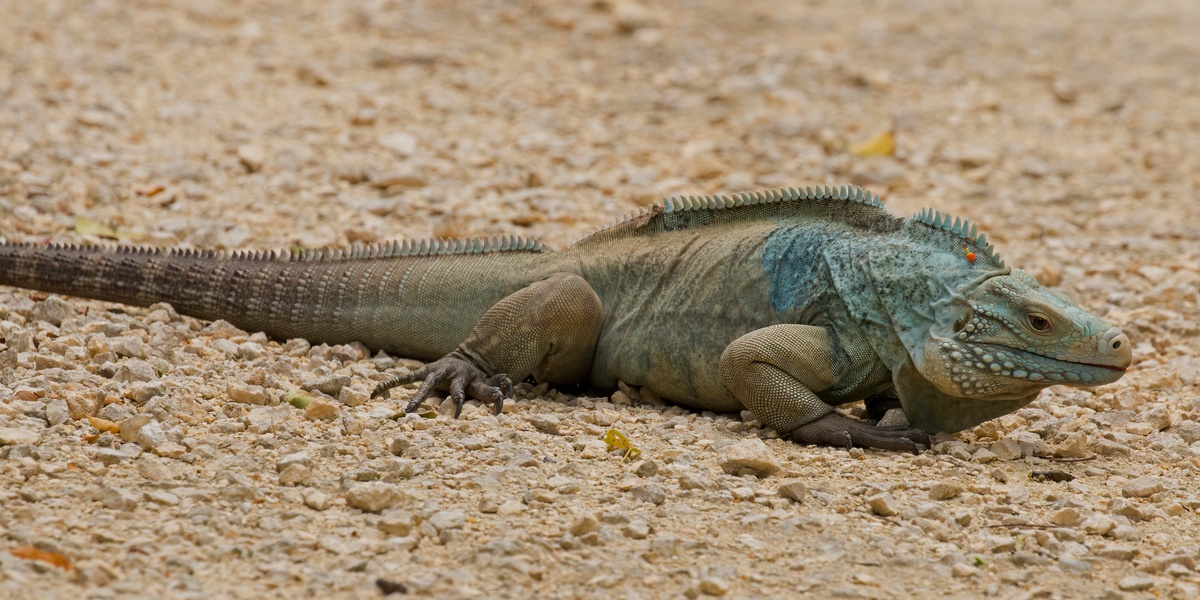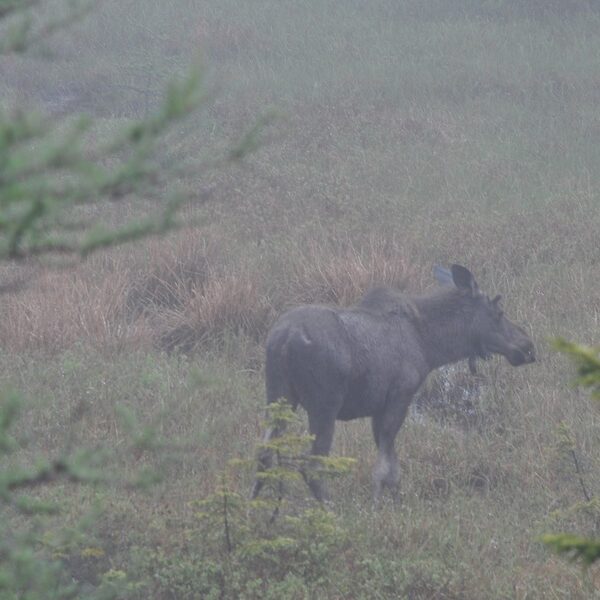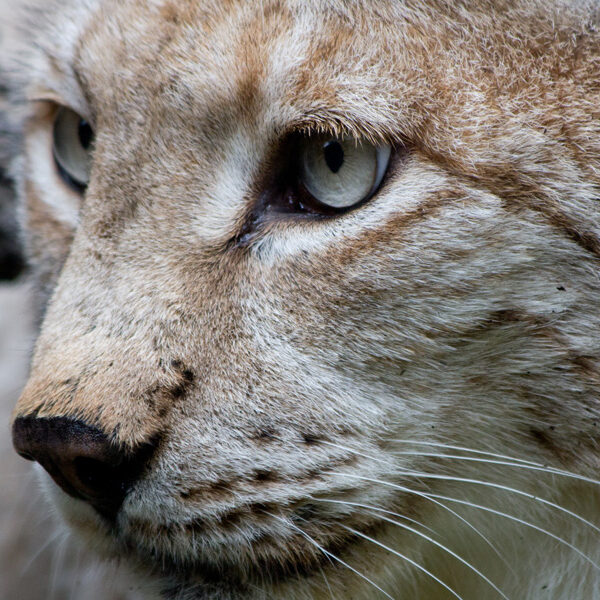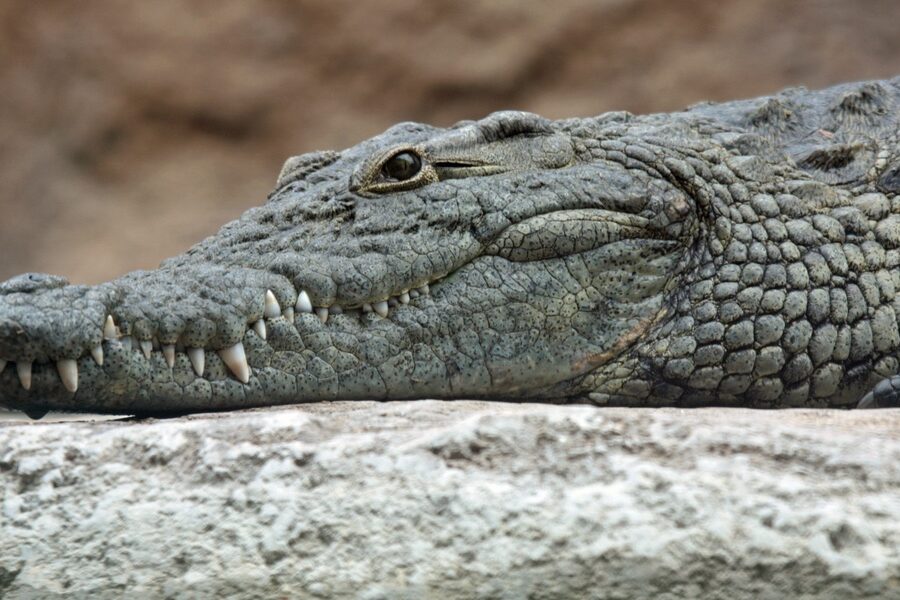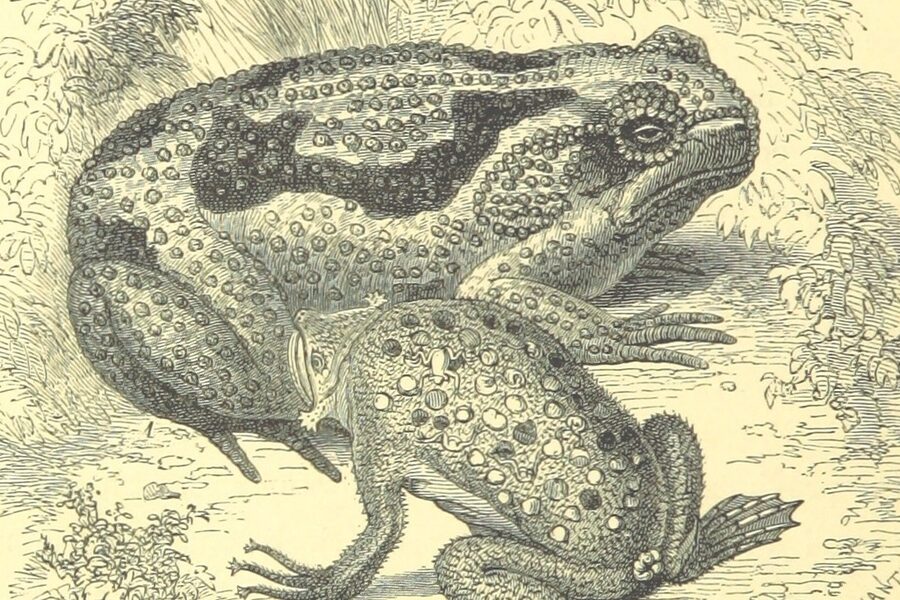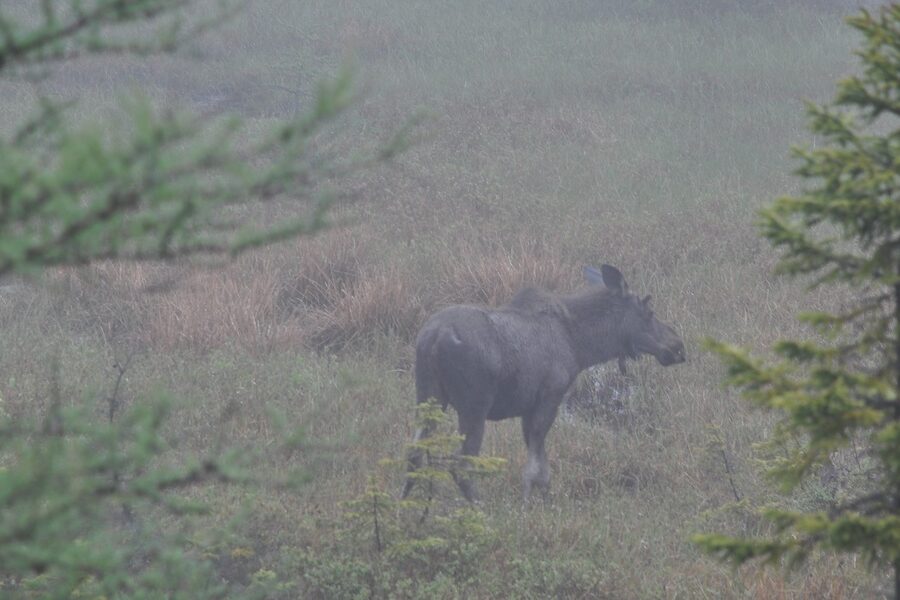In the vast spectrum of the animal kingdom, the color blue is a true rarity, often associated with birds or marine life. Among reptiles, however, this vibrant hue is even more uncommon, making each instance a fascinating exception. These creatures often use their blue coloration for display, camouflage, or as a warning, captivating anyone lucky enough to spot them.
This list dives into that captivating world, showcasing 31 blue reptiles that exhibit this striking coloration. From the vibrant Allison’s Anole (Cuban Blue Anole) to the surprisingly azure juvenile Western Skink, you’ll discover a remarkable range of species. For each entry, you’ll find below their Scientific Name, Habitat, and what makes their Blue Characteristic so unique.
Why is blue coloration so uncommon in reptiles?
Blue is a notoriously rare color in the animal kingdom, and especially among reptiles, because most animals cannot produce blue pigments. Instead, blue coloration is typically achieved through structural color, where light interacts with microscopic structures in their scales to reflect blue wavelengths. While some reptiles possess iridophores, specialized cells that create this effect, the precise cellular arrangement required for vivid blue is less common than the pigment-based colors like greens, browns, and blacks that dominate the reptilian world.
Do blue reptiles stay blue their whole lives?
Not all blue reptiles retain their striking hue throughout their lives. While species like the Allison’s Anole (Cuban Blue Anole) maintain their distinct blue as adults, others, such as the juvenile Western Skink, may display blue only during their younger stages, often as a potential warning to predators. As they mature, their coloration can shift to more muted browns or grays, serving different purposes like camouflage or mating displays.
Blue Reptiles
| Common Name | Scientific Name | Habitat | Blue Characteristic |
|---|---|---|---|
| Blue Iguana | Cyclura lewisi | Grand Cayman Islands; dry, rocky coastal forests | Bright sky-blue skin in adults, especially breeding males |
| Blue Tree Monitor | Varanus macraei | Batu Islands, Indonesia; lowland rainforest and trees | Intense cerulean-blue body with black spots and bands |
| Electric Blue Gecko | Lygodactylus williamsi | Tanzania (Kimboza Forest); coastal forest patches | Males are vivid electric-blue overall with black markings |
| Panther Chameleon | Furcifer pardalis | Madagascar; humid forests and plantations | Many island populations show bright blue and turquoise color phases |
| Parson’s Chameleon | Calumma parsonii | Eastern Madagascar forests | Often shows bluish-green to sky-blue tones in adults |
| Jackson’s Chameleon | Trioceros jacksonii | East Africa; montane forests (also introduced to Hawaii) | Males sometimes show blue-green coloration and blue highlights |
| Blue Anole | Anolis gorgonae | Gorgona Island, Colombia; humid rainforest | Overall bright turquoise-blue body in adults |
| Allison’s Anole (Cuban Blue Anole) | Anolis allisoni | Cuba and Bay Islands (Honduras); coastal forests and scrub | Males show striking blue-green body and bright blue head and dewlap |
| Eastern Indigo Snake | Drymarchon couperi | Southeastern USA; pine flatwoods, sandhills and hammocks | Glossy black scales with strong blue iridescent sheen in sunlight |
| Blue Coral Snake | Calliophis bivirgatus | Southeast Asia; tropical forest floor and leaf litter | Shiny blue-black body often with contrasting red or orange head or tail |
| Blue-banded Sea Krait | Laticauda laticaudata | Indo-Pacific; coral reefs and coastal waters | Distinct broad blue-black bands on a pale background |
| Blue-tongued Skink | Tiliqua scincoides | Australia; woodlands, grasslands and urban edges | Large vivid blue tongue used as a defensive display |
| Indonesian Blue-tongued Skink | Tiliqua gigas | New Guinea and nearby islands; tropical forests | Prominent blue tongue displayed when threatened |
| Common Five-lined Skink (juvenile) | Plestiodon fasciatus | Eastern North America; moist woodlands and leaf litter | Juveniles have bright cobalt-blue tails that fade with age |
| Western Skink (juvenile) | Plestiodon skiltonianus | Western North America; grasslands, forests and rocky areas | Juveniles display brilliant blue tails |
| Broad-headed Skink (juvenile) | Plestiodon laticeps | Southeastern USA; hardwood forests and edges | Young individuals with bright blue tails and striped bodies |
| Eastern Fence Lizard | Sceloporus undulatus | Eastern and central North America; open woodlands and rocky outcrops | Males have vivid blue belly and throat patches |
| Western Fence Lizard | Sceloporus occidentalis | Western North America; dry, rocky habitats | Males display bright blue belly and throat patches |
| Desert Spiny Lizard | Sceloporus magister | Southwestern USA and northern Mexico; desert and rocky areas | Males show blue throat and belly patches during breeding |
| Collared Lizard | Crotaphytus collaris | Southwestern North America; rocky deserts and canyons | Males often have bright turquoise-blue or deep blue bodies with black collars |
| Mwanza Flat-headed Rock Agama | Agama mwanzae | Central and East Africa; rocky outcrops and savanna | Dominant males have bright blue head and shoulders with reddish body |
| Common Agama (blue-headed males) | Agama agama | Sub-Saharan Africa; savanna, towns and rocky areas | Dominant males often show bright blue head and shoulders with red or orange body |
| Tokay Gecko | Gekko gecko | Southeast Asia; tropical forests and urban areas | Bluish-gray base color with contrasting orange or red spots, giving a blue appearance |
| Standing’s Day Gecko | Phelsuma standingi | Southwestern Madagascar; spiny forests and trees | Green body with bold turquoise to blue head and markings |
| Klemmer’s Day Gecko | Phelsuma klemmeri | Northwestern Madagascar; rainforest habitat | Vivid turquoise-blue and green coloration with red head markings |
| Gold Dust Day Gecko | Phelsuma laticauda | Madagascar and nearby islands; palms, gardens and human habitats | Bright green with turquoise-blue speckles and blue throat in spots |
| Mauritius Day Gecko | Phelsuma cepediana | Mauritius; plantations, gardens and forest edges | Bright green body with striking blue head and neck patches |
| Blue-headed Tree Agama | Acanthocercus atricollis | Sub-Saharan Africa; savanna, woodland edges and rocky outcrops | Breeding males have bright blue head and often blue body tones |
| Blue Racer (snake) | Coluber constrictor foxii | Great Lakes region and parts of central USA; open woodlands and fields | Smooth scales with an overall bluish-gray to slate-blue coloration in adults |
| Veiled Chameleon | Chamaeleo calyptratus | Yemen and Saudi Arabia; arid mountain slopes and cultivated areas | Males and females can show green to aqua or blue-green hues during displays |
| Panamanian Blue-Eyed Anole (noted blue dewlap) | Anolis frenatus (population display) | Central America; humid lowland forests | Some populations show brilliant blue dewlaps or throat patches in males |
Images and Descriptions
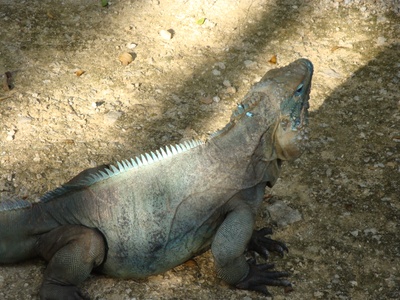
Blue Iguana
Large herbivorous iguana endemic to Grand Cayman; males develop vivid blue coloration during breeding and are the focus of major conservation efforts
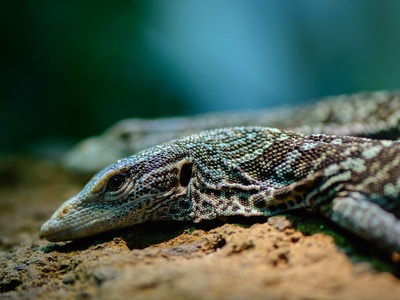
Blue Tree Monitor
Arboreal monitor prized for its brilliant blue scales and distinctive spotted pattern; shy and striking in appearance
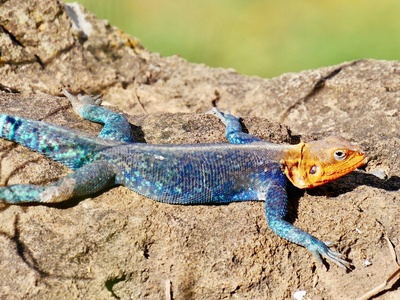
Electric Blue Gecko
Tiny dwarf gecko famous for its saturated blue males; rare and threatened in the wild and popular in the pet trade
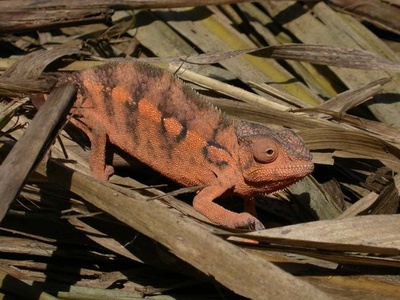
Panther Chameleon
Colorful chameleon that can display intense blue hues depending on locale, mood and breeding condition
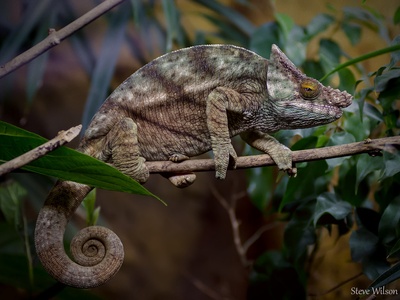
Parson’s Chameleon
One of the largest chameleons; some populations display striking blue-green coloration and impressive size
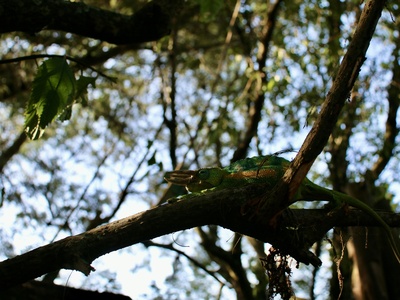
Jackson’s Chameleon
Three-horned chameleon with variable coloration, including vivid blues in some males used in displays
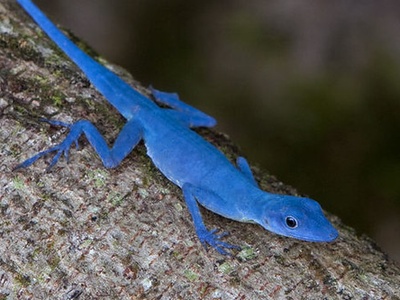
Blue Anole
Rare island anole notable for its almost entirely blue coloration, unusual among anoles
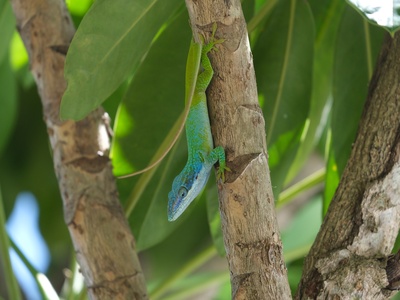
Allison’s Anole (Cuban Blue Anole)
Colorful tree-dwelling anole often seen on tree trunks; males display vivid blue during social interactions
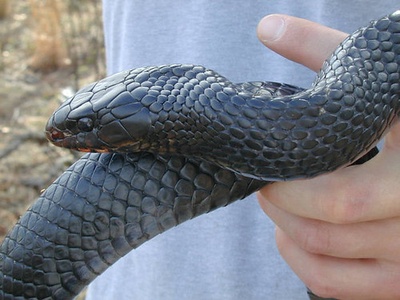
Eastern Indigo Snake
The largest native U.S. snake; scales often reflect a deep blue shimmer when caught by light
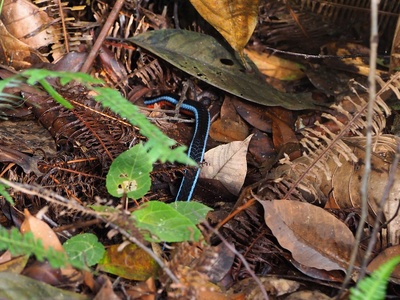
Blue Coral Snake
Striking and highly venomous coral snake with an unusually glossy blue body and bold contrasting colors
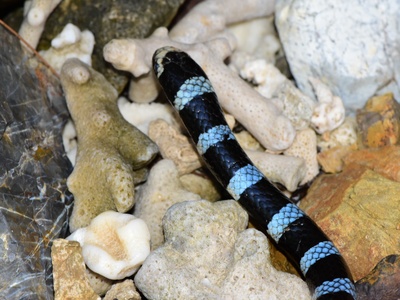
Blue-banded Sea Krait
Sea krait that forages on reefs and returns to land; notable for bold blue banding and amphibious habits
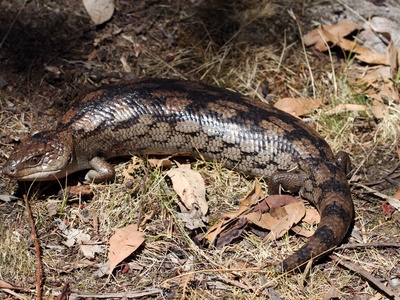
Blue-tongued Skink
Robust, slow-moving skink whose startling blue tongue warns predators and startles observers
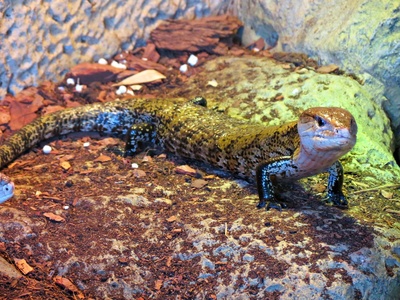
Indonesian Blue-tongued Skink
One of the largest blue-tongued skinks with powerful body and characteristic blue tongue
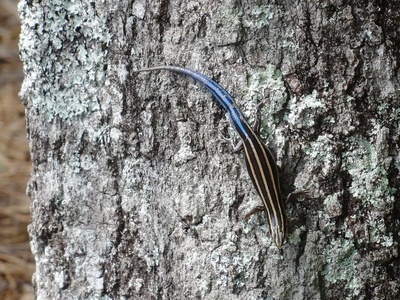
Common Five-lined Skink (juvenile)
Small skink whose vivid blue tail in young redirects predator attacks toward the tail which can be shed
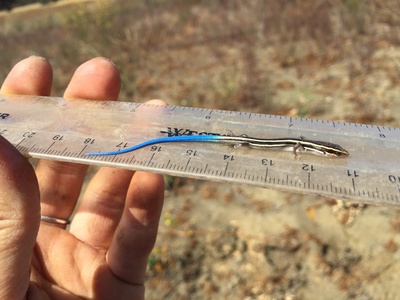
Western Skink (juvenile)
Active little skink whose blue-tailed juveniles are common in gardens and natural areas
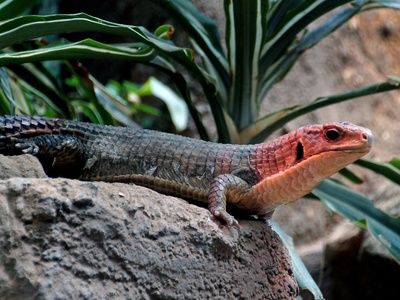
Broad-headed Skink (juvenile)
Large eastern skink species whose juveniles use blue tails as a defensive lure
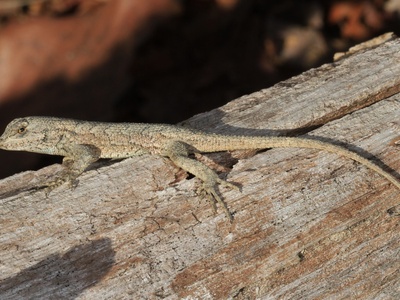
Eastern Fence Lizard
Common sun-loving lizard often seen on logs and rocks; blue belly used in territorial and mating displays

Western Fence Lizard
Frequently called the “blue-belly” lizard; common across many western landscapes and easy to spot basking

Desert Spiny Lizard
Large spiny lizard with striking blue highlights on males used in courtship and territory defense
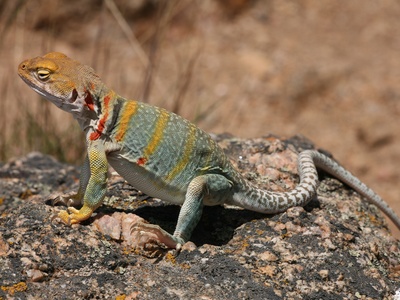
Collared Lizard
Active, fast-moving lizard that can run bipedally; males exhibit brilliant blue breeding colors
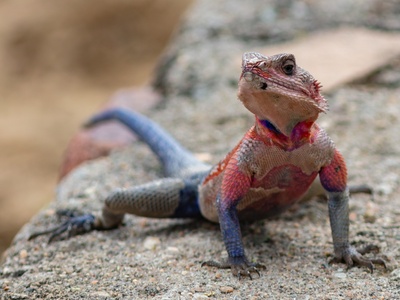
Mwanza Flat-headed Rock Agama
Striking “Spider-Man” agama in which territory-holding males display intense blue during mating season

Common Agama (blue-headed males)
Widespread agama where breeding males develop vivid blue on the head and upper body
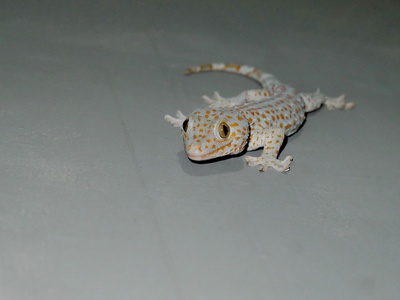
Tokay Gecko
Large nocturnal gecko famous for its loud calls and showy bluish skin with bright spots
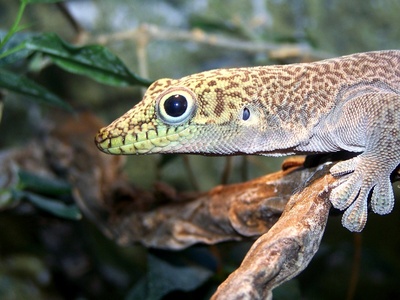
Standing’s Day Gecko
One of the larger day geckos; shows attractive blue highlights used in species recognition
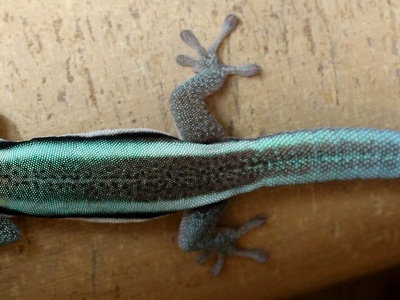
Klemmer’s Day Gecko
Tiny colorful day gecko often found in banana trees; prized for bright blue tones
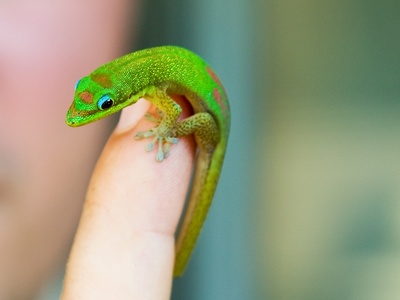
Gold Dust Day Gecko
Active diurnal gecko that frequently colonizes human areas; blue highlights are conspicuous
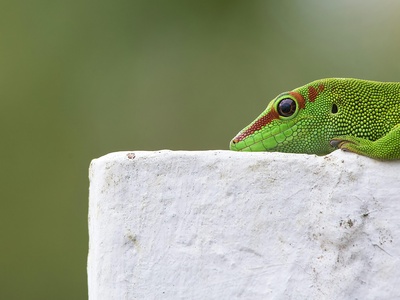
Mauritius Day Gecko
Common island day gecko with bold blue facial markings contrasting its green body
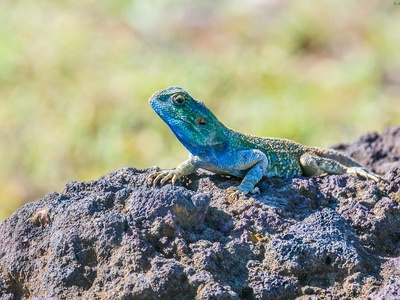
Blue-headed Tree Agama
Arboreal agama where males show conspicuous blue during courtship and territorial displays
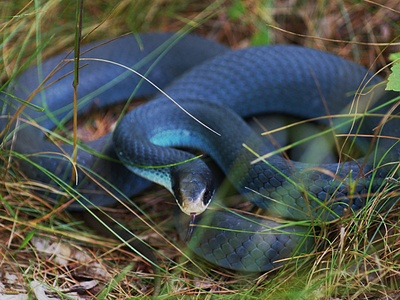
Blue Racer (snake)
A fast, diurnal racer snake known locally as the blue racer for its slate-blue appearance and agility
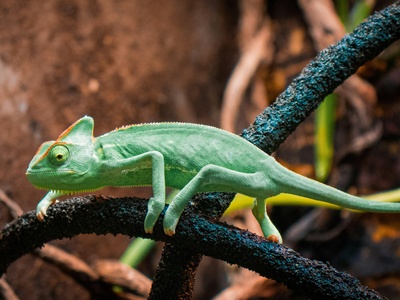
Veiled Chameleon
Familiar chameleon species that can display blues among other colors; commonly kept as a pet species
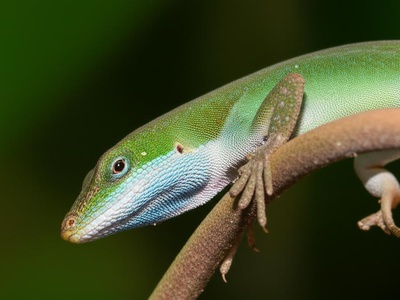
Panamanian Blue-Eyed Anole (noted blue dewlap)
Anole with locally prominent blue throat displays used in signaling (blue is a conspicuous display color in some populations)
